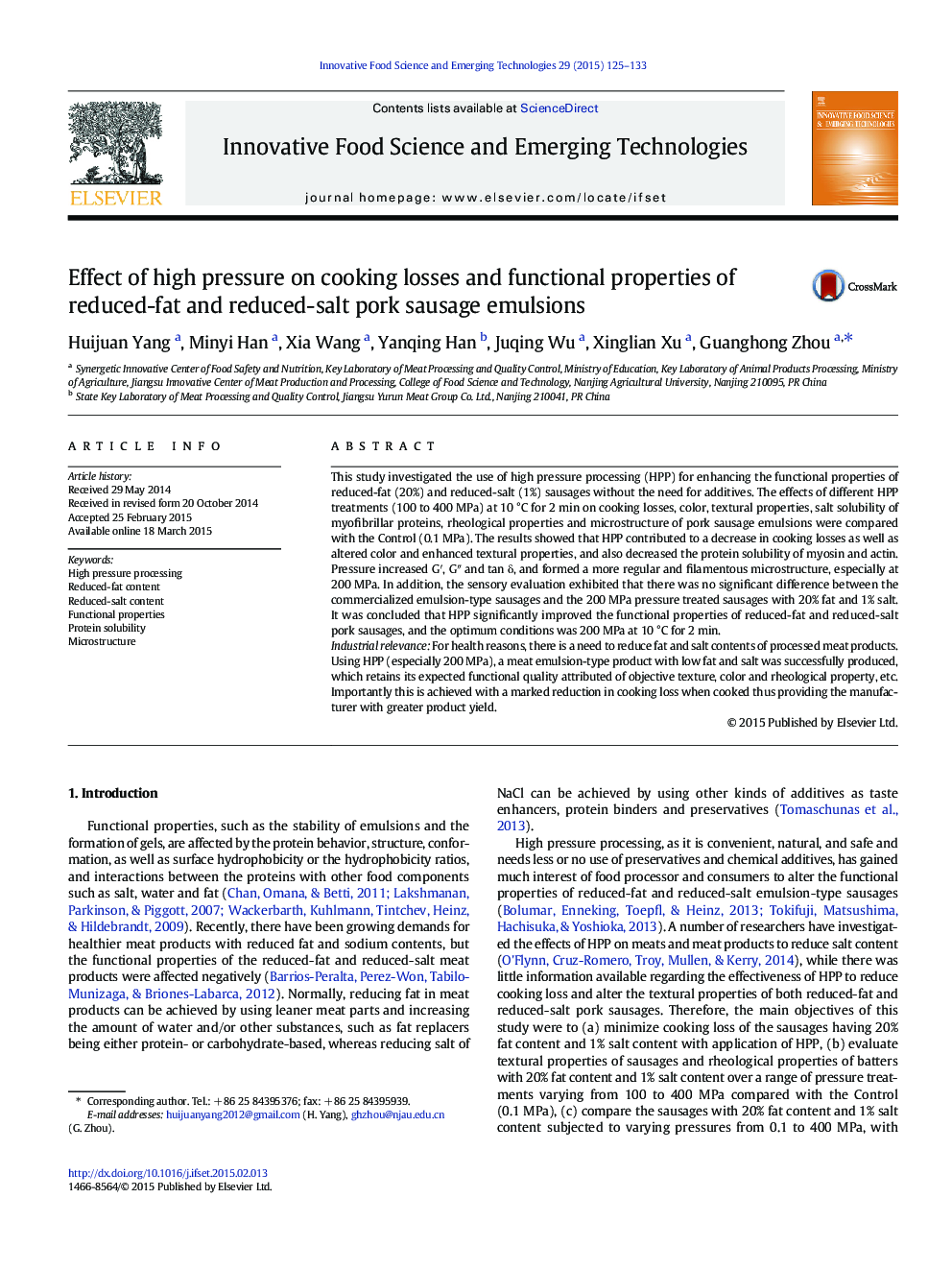| Article ID | Journal | Published Year | Pages | File Type |
|---|---|---|---|---|
| 2086471 | Innovative Food Science & Emerging Technologies | 2015 | 9 Pages |
•HPP at 10 °C for 2 min reduced cooking loss of sausage containing 20% added fat and 1% salt, especially at 200 MPa.•HPP increased lightness and whiteness, but reduced redness of sausages containing 20% added fat and 1% salt.•HPP improved textural properties of sausages containing 20% added fat and 1% salt.•HPP contributed to development of protein networks in the gel, thus improved rheological properties.•HPP has potential in improving functional properties of pork sausages containing 20% added fat and 1% salt.
This study investigated the use of high pressure processing (HPP) for enhancing the functional properties of reduced-fat (20%) and reduced-salt (1%) sausages without the need for additives. The effects of different HPP treatments (100 to 400 MPa) at 10 °C for 2 min on cooking losses, color, textural properties, salt solubility of myofibrillar proteins, rheological properties and microstructure of pork sausage emulsions were compared with the Control (0.1 MPa). The results showed that HPP contributed to a decrease in cooking losses as well as altered color and enhanced textural properties, and also decreased the protein solubility of myosin and actin. Pressure increased G′, G″ and tan δ, and formed a more regular and filamentous microstructure, especially at 200 MPa. In addition, the sensory evaluation exhibited that there was no significant difference between the commercialized emulsion-type sausages and the 200 MPa pressure treated sausages with 20% fat and 1% salt. It was concluded that HPP significantly improved the functional properties of reduced-fat and reduced-salt pork sausages, and the optimum conditions was 200 MPa at 10 °C for 2 min.Industrial relevanceFor health reasons, there is a need to reduce fat and salt contents of processed meat products. Using HPP (especially 200 MPa), a meat emulsion-type product with low fat and salt was successfully produced, which retains its expected functional quality attributed of objective texture, color and rheological property, etc. Importantly this is achieved with a marked reduction in cooking loss when cooked thus providing the manufacturer with greater product yield.
